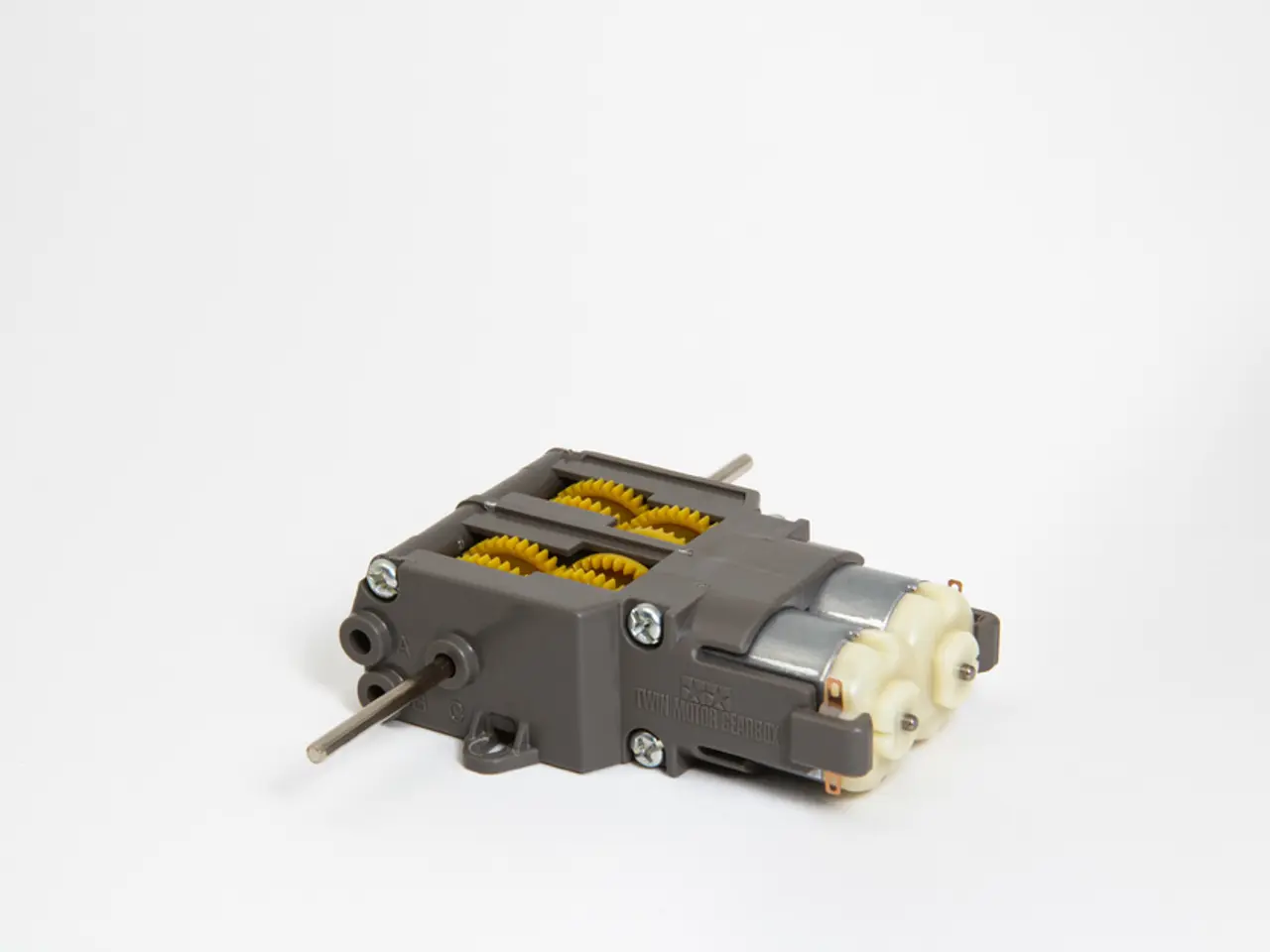Utilization and Choices in Motor Selection for Heavy Industries
In the realm of industrial applications, selecting the right motor can significantly impact efficiency, performance, and overall system success. This guide delves into the performance differences, advantages, and disadvantages of four common motor types: AC induction, synchronous, DC, and servo motors.
Motor Speed and Control
When it comes to high-speed applications, AC induction motors are a popular choice due to their compact size and lower cost. However, they operate at slightly less than synchronous speed due to a slip factor [1][3]. Modern speed control often relies on variable frequency drives (VFDs), which are compatible with both AC induction and synchronous motors [1][3]. Servo motors are preferred for precise high-speed control above 1,000 rpm, as they maintain torque at high speeds [2].
Load Characteristics and Torque Requirements
Servo motors excel in applications with varying or unpredictable loads, enabling instant adjustment and maintaining accuracy under changing loads [2]. Stepper motors are suitable for consistent, predictable loads with moderate torque and speed needs [2]. AC motors, particularly induction, typically operate loads within rated horsepower, but selecting a motor with an adequate service factor is crucial to avoid premature failure due to heat from overloads [1].
Precision and Positioning Needs
Servo motors are chosen for applications demanding high precision, coordinated multi-axis movement, and rapid acceleration/deceleration, such as CNC machining and robotics [2]. Stepper motors can suffice for simple point-to-point positioning where complex path coordination is not required [2]. DC motors offer good speed and torque control but are less favored in modern precision applications compared to servo systems.
Starting Methods and Electrical Infrastructure
The choice of motor starting method depends on the power system's capacity and the need to reduce voltage dips and inrush currents [3]. This affects motor selection, particularly for large motors or those starting simultaneously. AC motors are generally simpler to start, but large motors may require sophisticated starting methods to avoid system disturbances [3].
Cost and Maintenance
Stepper motors provide a cost-effective solution for applications with moderate speed and torque requirements and minimal load variability [2]. Servo systems are more expensive but justify cost through performance and precision in demanding environments [2]. AC induction motors offer a balance of cost, durability, and ease of use in many industrial fans and pumps [1]. DC motors require more maintenance due to brushes and commutators, making them less common in modern installations.
Environmental and Installation Considerations
Motor size, weight, and noise may influence motor choice, with higher speed AC motors preferred where compactness and reduced weight are critical despite noise concerns [1]. For harsh environments or applications demanding robust operation, synchronous or AC motors might be selected for their ruggedness.
In conclusion, the decision on industrial motor selection is a trade-off driven by required speed and torque profiles, load variability, precision, control complexity, starting conditions, cost constraints, and environmental factors [1][2][3]. This guide offers valuable takeaways for upgrading existing systems or designing new ones, with recommendations based on practical knowledge and real-world applications.
[1] Industrial Motor Selection Guide
[2] Servo Motors for Precision Applications
[3] Selecting the Right Motor for Your Application
- The growth in data-and-cloud-computing and technology sectors has opened up new opportunities for sports-betting companies, as they can adapt precision control systems used in manufacturing industries, such as servo motors, to create more accurate predictions and enhance user experience.
- With the increasing interest in sports-betting, financial institutions are growing more concerned about the impact of unpredictable fluctuations in bets on their balance sheets, making it essential to analyze and control risks using the latest data analysis tools and techniques, similar to the way AC motors adjust their speed and control based on variable loads.
- Modern sports equipment manufacturers turn to advanced manufacturing methods and high-performance materials, such as carbon fiber composites, to achieve lightweight, durable, and top-performancing products. This innovation mirrors the leaner, more efficient design that has been a major factor in the success of smaller, precision AC motors in the industrial market.








